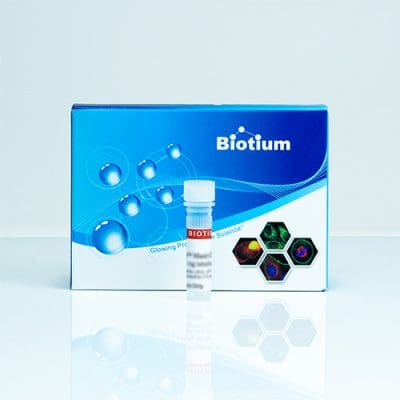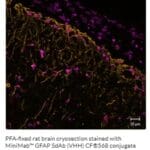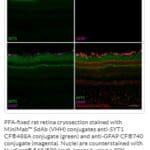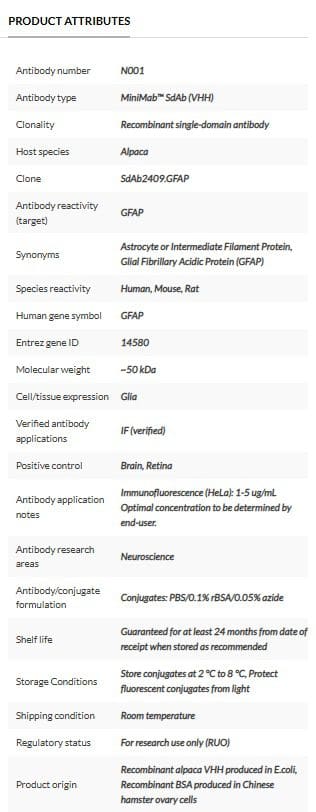
VHH nanobody targeting glial fibrillary acidic protein (GFAP), part of Biotium’s MiniMab™ SdAb series that have been engineered for optimal conjugate performance.
| Name | SKU | Size | Availability | Vendor | Price | Order | |
CF®488A |
N001-488A-200UL | 200uL | Generally 1-2 weeks from receipt of order | Biotium | Log in for pricing | ||
CF®498 |
N001-498-200UL | 200uL | Generally 1-2 weeks from receipt of order | Biotium | Log in for pricing | ||
CF®568 |
N001-568-200UL | 200uL | Generally 1-2 weeks from receipt of order | Biotium | Log in for pricing | ||
CF®583R |
N001-583R-200UL | 200uL | Generally 1-2 weeks from receipt of order | Biotium | Log in for pricing | ||
CF®647 |
N001-647-200UL | 200uL | Generally 1-2 weeks from receipt of order | Biotium | Log in for pricing | ||
CF®660C |
N001-660C-200UL | 200uL | Generally 1-2 weeks from receipt of order | Biotium | Log in for pricing | ||
CF®680 |
N001-680-200UL | 200uL | Generally 1-2 weeks from receipt of order | Biotium | Log in for pricing | ||
CF®740 |
N001-740-200UL | 200uL | Generally 1-2 weeks from receipt of order | Biotium | Log in for pricing |
Product Description
GFAP Recombinant Alpaca VHH (SdAb2409.GFAP) recognizes the glial fibrillary acidic protein (GFAP) expressed in neural tissues. This high-affinity single-domain antibody (SdAb), also known as camelid VHH or Nanobody®, is part of our MiniMab™ series of highly optimized conjugated probes. The nanobody has been validated for immunofluorescence microscopy and is available conjugated to CF® Dyes.
Features of MiniMab™ Nanobodies single-domain antibodies
- Superior to conventional antibodies: deeper tissue penetration, higher solubility and stability, and faster staining
- Minimal epitope-dye displacement—perfect for super-resolution imaging
- Specifically developed and optimized for immunofluorescence
- Labelled with bright, photostable CF® Dyes, including near-infrared CF®740 option
- Available as conjugates with Biotium’s best-in-class dyes for STORM
GFAP is a 49-kDa type III intermediate filament protein found in neural tissues, serving as a marker that differentiates astrocytes from other glial cells during the development of the central nervous system. Although three splice variants of GFAP have been identified, the alpha isoform is the most abundantly expressed in astrocytes. GFAP is capable of co-assembling with vimentin and nestin in astrocytes, though these interactions are not essential for its filament formation. Similar to other intermediate filaments, GFAP assembly is regulated by phosphorylation and dephosphorylation of its N-terminal domain. Mutations in the GFAP gene have been linked to Alexander disease, and elevated GFAP expression has been observed in certain tumours derived from glial cells.
Learn more about CF® Dyes for super-resolution as well as our innovative reagents for immunofluorescence microscopy; this includes our NucSpot® Nuclear Stains for bright and nuclear-specific staining in a wide colour selection, and CytoLiner™ Fixed Cell Membrane Stains for robust membrane staining in formaldehyde-fixed cells.
View Biotium’s full selection of primary and secondary antibodies available with bright CF® Dyes and other labels.





